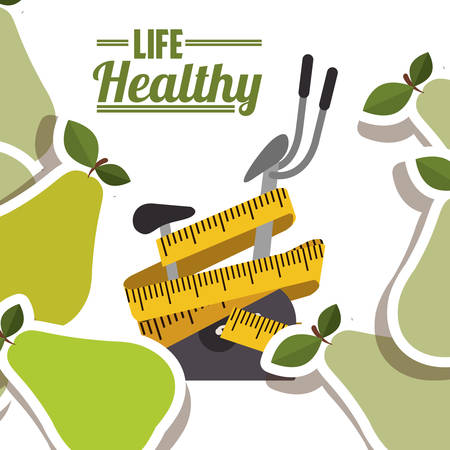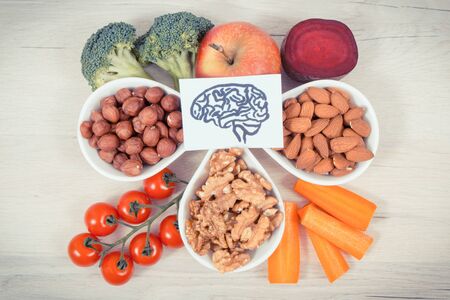Introduction to Cerebral Palsy and Its Prevalence in India
Cerebral palsy (CP) is a group of permanent movement disorders that appear in early childhood, affecting muscle tone, posture, and motor skills. In India, CP is one of the most common causes of physical disability among children, with estimates suggesting that 3 out of every 1,000 live births are affected. The prevalence may be even higher in rural and under-resourced communities due to limited access to maternal healthcare and increased risk factors such as premature birth, low birth weight, and infections during pregnancy. The Indian context is unique—families often face social stigma, lack of awareness, and limited rehabilitation facilities, all of which influence how CP is managed. Moreover, traditional family structures and local beliefs play a significant role in decision-making regarding therapy and daily care. Nutrition and dietary habits deeply rooted in Indian culture present both challenges and opportunities for children with cerebral palsy. As food choices are shaped by regional availability, religious practices, and socio-economic status, understanding the role of nutrition within the Indian dietary framework becomes crucial for effective management of CP.
Understanding Nutritional Needs for Children with Cerebral Palsy
Cerebral palsy (CP) often brings unique nutritional challenges, especially in the Indian context where traditional diets, family habits, and regional food availability play a significant role. Children with CP may have difficulty in chewing, swallowing (dysphagia), or digesting food efficiently due to muscle control issues. These factors make it essential to tailor their nutrition carefully to support growth, immunity, and overall well-being.
Special Dietary and Nutritional Requirements
Children with cerebral palsy generally require a balanced diet rich in calories, proteins, vitamins, and minerals to combat malnutrition and support physical development. Due to their condition, energy needs can vary—some children may need more calories because of involuntary movements, while others may need less if their mobility is limited. Additionally, micronutrients like calcium, iron, vitamin D, and B-complex vitamins are crucial for bone health and neurological function.
Common Nutritional Concerns in Indian Children with CP
| Nutritional Issue | Possible Causes | Indian Context Example |
|---|---|---|
| Undernutrition/Low Weight | Poor feeding skills; frequent infections | Relying heavily on diluted dal or watery khichdi |
| Micronutrient Deficiency | Lack of dietary diversity | Limited intake of green leafy vegetables or fruits due to chewing difficulties |
| Dehydration/Constipation | Inadequate fluid & fibre intake | Low consumption of fresh fruits; high reliance on rice-based meals |
| Swallowing Difficulties (Dysphagia) | Poor oral-motor control | Difficulty eating roti, chapati or dry snacks without choking risk |
Challenges Faced by Indian Families and Caregivers
The journey of managing nutrition for children with CP in India is filled with practical hurdles. Many families struggle with limited knowledge about special dietary needs and affordable food choices. Regional food customs—such as spicy curries or coarse grains—may not be suitable for children who need soft or blended foods. Moreover, rural areas may lack access to nutritionists or therapists who can guide caregivers about appropriate meal textures and nutrient fortification. Social stigma around disability can further restrict open discussions about feeding problems.
Key Points for Indian Caregivers:
- Customising Meals: Adapting traditional foods such as making dal thicker, blending sabzi, or preparing soft idlis can help meet texture requirements.
- Economic Constraints: Families often have budget limitations; using locally available pulses, seasonal vegetables, eggs, and dairy products can provide cost-effective nourishment.
- Cultural Acceptance: Encouraging the use of household spices like turmeric and jeera (cumin), which aid digestion but avoiding excess chilli to prevent discomfort.
- Lack of Professional Guidance: There is a scarcity of specialised speech therapists or dietitians in many Indian towns and villages.
- Coping Strategies: Peer support groups (such as WhatsApp communities) can help families share tips on feeding techniques and recipes adapted from regional cuisines.
By understanding these unique nutritional needs and the cultural landscape of Indian households, caregivers can better manage the health outcomes of children living with cerebral palsy.

3. Core Components of a Balanced Indian Diet
Indian cuisine is known for its diversity, rich flavours, and the use of locally available grains, legumes, vegetables, fruits, dairy, and spices. These traditional foods form the backbone of everyday meals across the country. For children with cerebral palsy (CP), nutrition must be carefully considered to address their unique needs while respecting cultural food habits. A balanced Indian diet can be thoughtfully adapted to ensure optimal growth and development in children with CP.
Staple Foods in the Indian Diet
The foundation of most Indian meals includes staples like rice, wheat (as chapati or roti), millets (ragi, bajra, jowar), and pulses such as dal (lentils) and chana (chickpeas). These provide essential carbohydrates and proteins needed for energy and muscle repair. For children with CP who may have difficulty chewing or swallowing, these foods can be made softer—like well-cooked khichdi, dalia porridge, or mashed upma—to make them easier to consume.
Vegetables and Fruits
Seasonal vegetables such as carrots, pumpkin, spinach, bottle gourd (lauki), and beans are integral parts of Indian thalis. These can be finely chopped or pureed into soups or curries to maintain texture suitable for children with feeding challenges. Fruits like banana, papaya, mango, and sapota are soft and nutrient-rich options that can be mashed or blended into smoothies for added vitamins and minerals.
Dairy and Protein Sources
Dairy products like milk, curd (dahi), paneer, and ghee are widely consumed across India and serve as excellent sources of calcium and healthy fats crucial for bone health. For vegetarian families, dals, soy products (tofu), nuts (powdered if necessary), and seeds can help meet protein requirements. Eggs, chicken curry (deboned and shredded), or fish may also be included depending on family preference.
Adaptation Tips for Children with Cerebral Palsy
Traditional dishes can be modified by adjusting their consistency—such as blending dals into soups, offering soft idlis instead of crispy dosas, or preparing thick porridges using ragi flour. Using local oils like groundnut or mustard oil adds healthy fats which are important for brain function. Small but frequent meals may work better than large portions for children with reduced appetite or feeding difficulties.
By leveraging familiar Indian foods in creative ways tailored to each child’s abilities and preferences, families can provide balanced nutrition that supports both physical health and cultural identity in children living with cerebral palsy.
4. Locally Available Nutrient-Rich Foods and Feeding Strategies
Accessible Indian Foods for Optimum Nutrition
Nutrition plays a key role in the management of cerebral palsy (CP), especially when it comes to supporting growth, immunity, and muscle strength. In India, many locally available foods are naturally rich in proteins, vitamins, and minerals essential for children with CP. Here is a list of commonly accessible Indian foods, categorized by their nutrient content:
| Nutrient Type | Local Indian Foods |
|---|---|
| Proteins | Moong dal (green gram), chana dal (Bengal gram), paneer, curd, eggs, fish (for coastal areas), chicken, soya chunks, rajma (kidney beans) |
| Iron & Minerals | Spinach, methi (fenugreek leaves), drumstick leaves, jaggery, bajra (pearl millet), ragi (finger millet), black chana |
| Vitamins | Papaya, guava, amla (Indian gooseberry), carrots, tomatoes, pumpkin, sweet potato, oranges |
| Healthy Fats | Groundnut oil, coconut oil (South India), ghee, sesame seeds (til) |
Practical Feeding Recommendations for Children with Cerebral Palsy
Feeding difficulties are common among children with CP due to challenges like poor oral motor control or swallowing issues. Adapting feeding strategies using local Indian foods can help meet their nutritional needs:
- Texture Modification: Prepare dals as thin soups or soft khichdi to make them easier to swallow. Mash vegetables and fruits such as bananas or boiled potatoes.
- Frequent Small Meals: Offer smaller portions throughout the day instead of three large meals to manage fatigue and swallowing problems.
- Nutrient-Dense Additions: Add ghee or groundnut oil to rice or dal for extra calories. Mix powdered nuts into porridge for added protein and healthy fats.
- Finger Foods: For children able to self-feed, offer soft idlis, pieces of ripe papaya, or boiled eggs that are easy to hold and chew.
- Cultural Acceptability: Use familiar spices in moderation for flavour without irritation. Home-based recipes such as soft upma or suji halwa can be customized for texture and nutrition.
- Spoon-Feeding Tips: Use small spoons and encourage slow feeding; sit the child upright to prevent choking.
Involving Family and Local Community Resources
Caring for a child with CP is a collective effort. Encourage family members to participate in meal preparation and feeding times. Local anganwadis and community health workers can support families with practical demonstrations on food modification and feeding positions suitable for children with special needs.
5. Inclusive Practices: Family and Community Support
The Role of Family in Nutrition Management
Families play a pivotal role in the nutrition and overall care of children with cerebral palsy (CP) in India. In most Indian households, meal planning and preparation is a family-centric activity, often managed by mothers or primary caregivers. Educating family members about the specific dietary needs for children with CP—such as energy-dense foods, protein sources like dal, paneer, and eggs, and locally available fruits and vegetables—ensures that nutrition plans are practical and sustainable. Empowering families to make informed food choices within their cultural context helps enhance compliance and positive outcomes.
Community Participation for Holistic Care
In Indian society, communities act as extended families. Local community groups, Anganwadi workers, and self-help groups are instrumental in spreading awareness about CP-friendly nutrition practices. These networks can facilitate access to government nutrition schemes such as the Mid-Day Meal Scheme or ICDS (Integrated Child Development Services), ensuring that children with special needs are included. Village health committees and Panchayats can also advocate for inclusive feeding programs at schools and community centres.
Health Workers as Change Agents
Frontline health workers—ASHA (Accredited Social Health Activist), ANM (Auxiliary Nurse Midwife), and Anganwadi workers—play a crucial role in connecting families with resources. They provide home visits to monitor growth, give nutritional counselling tailored to local diets (like millets, rice, sambar, khichdi), and facilitate early identification of feeding difficulties common in CP. Their culturally sensitive support builds trust, breaks stigma, and encourages families to seek regular intervention.
Cultural Sensitivity and Inclusion
Respecting traditional food habits while introducing modifications is essential for success. For example, adapting family recipes by adding ghee or groundnuts for extra calories or using local spices to improve taste encourages better acceptance by both the child and the family. Festivals and community gatherings offer opportunities for peer learning and sharing of nutritious recipes suitable for children with CP.
By embracing an inclusive approach that involves family members, leverages local community resources, and utilizes health worker expertise, the management of cerebral palsy through nutrition becomes both culturally relevant and practically achievable across diverse Indian settings.
6. Government Schemes, NGOs and the Way Forward
India has taken significant steps in addressing the nutritional needs of children with cerebral palsy (CP) through both government initiatives and the dedicated work of non-governmental organisations (NGOs). The Indian government, under schemes like the Integrated Child Development Services (ICDS), Mid-Day Meal Scheme, and National Health Mission (NHM), aims to deliver balanced nutrition and special care to differently-abled children. These programmes strive to reach grassroots levels, especially in rural India where awareness and resources may be limited. However, challenges such as inadequate funding, lack of trained personnel, and insufficient focus on customised dietary needs for CP children persist.
NGOs play a crucial role in bridging these gaps by conducting nutrition camps, providing home-based support, and offering parent training programmes tailored for children with cerebral palsy. Organisations such as The Spastics Society of India and ADAPT Mumbai have pioneered inclusive approaches that integrate dietary counselling with physiotherapy and special education. Their community outreach often extends beyond urban centres, ensuring that even families from small towns or villages have access to vital information about appropriate Indian diets — incorporating locally available millets, pulses, dairy products, fruits, and vegetables that suit the cultural palate while meeting nutritional requirements.
Despite these efforts, there remains a pressing need for increased collaboration between government bodies and NGOs to develop region-specific dietary guidelines for cerebral palsy management. Recommendations moving forward include: enhancing awareness campaigns in local languages; training Anganwadi workers and ASHA workers in basic nutrition for neuro-disabilities; subsidising special nutritional supplements under public health programmes; and encouraging research into traditional Indian foods that can benefit children with CP. By leveraging the strengths of both governmental frameworks and grassroots NGO initiatives, India can create a more inclusive ecosystem for managing cerebral palsy through culturally relevant nutrition strategies.


